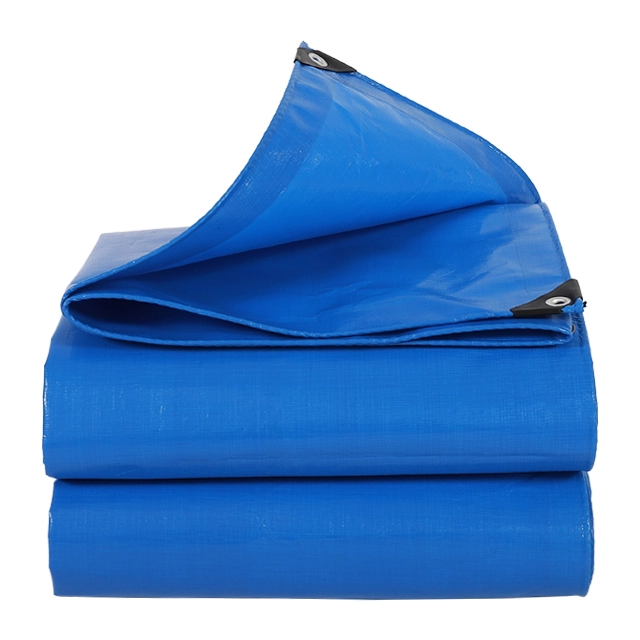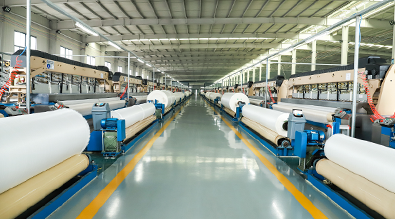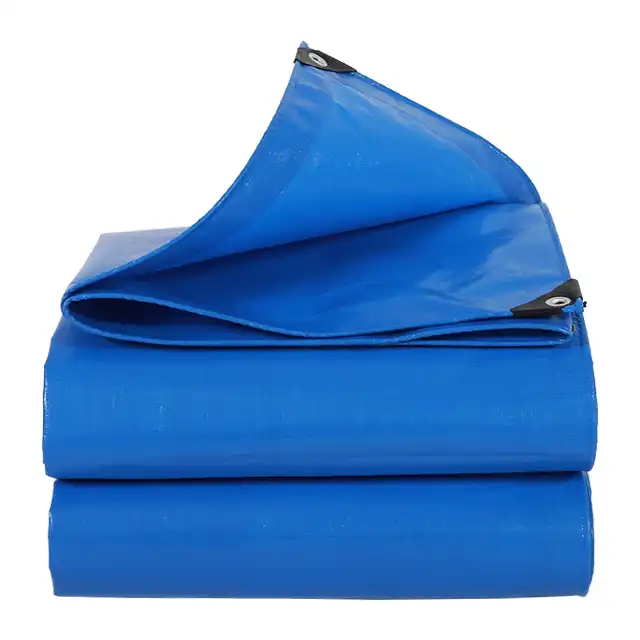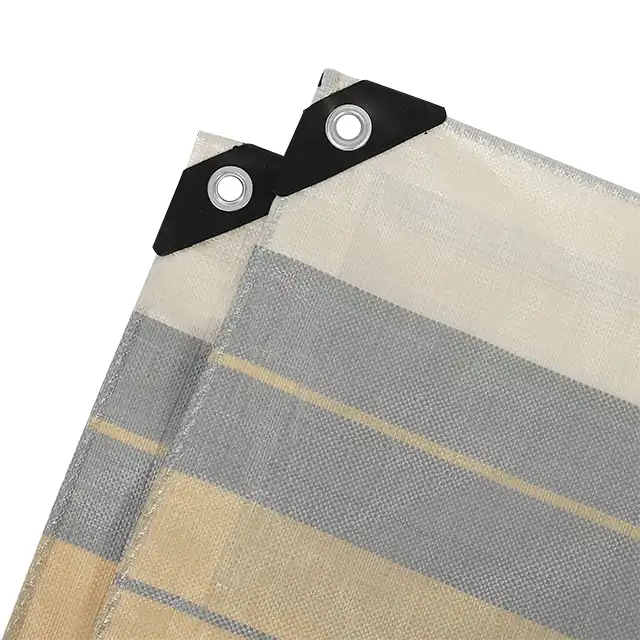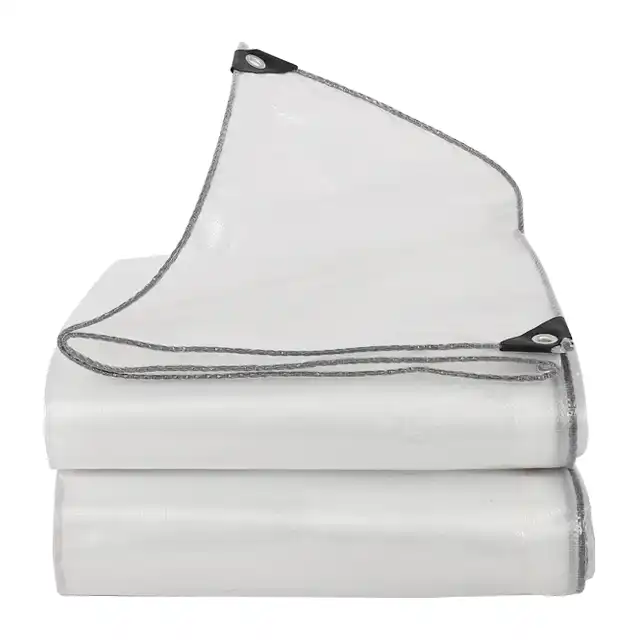2025 Buyer’s Guide to PE Tarpaulin
As we enter 2025, the demand for high-quality protective materials continues to grow across industries worldwide. PE Tarpaulin has emerged as one of the most versatile and reliable solutions for various applications, from construction and agriculture to humanitarian aid and recreational activities. This comprehensive buyer's guide will navigate you through the essential aspects of selecting the right PE Tarpaulin for your specific needs. Whether you're a construction professional seeking durable covers, an agricultural producer requiring weather protection, or a procurement manager evaluating suppliers, understanding the intricacies of PE Tarpaulin technology, manufacturing processes, and quality standards is crucial for making informed purchasing decisions that deliver long-term value and performance.

Understanding PE Tarpaulin Materials and Construction
High-Density Polyethylene Fabric Foundation
PE Tarpaulin construction begins with high-density polyethylene (HDPE) woven fabric that forms the structural backbone of these protective covers. The manufacturing process involves extruding polyethylene into continuous filaments, which are then woven into fabric using advanced water-jet looms capable of producing widths up to 5 meters without joints. This seamless construction eliminates weak points that could compromise the tarpaulin's integrity under stress. Modern PE Tarpaulin manufacturers utilize yarn thickness ranging from 400D to 2500D, allowing for customization based on specific strength requirements. The tightly woven structure creates a mesh count typically ranging from 10x10 to 14x14, providing optimal balance between strength and flexibility. The HDPE foundation offers exceptional tear resistance and maintains structural integrity even under extreme weather conditions. Advanced manufacturing facilities employ over 400 units of Korea-imported automatic water-jet looms to ensure consistent quality and precise weaving patterns. The fabric's inherent properties include resistance to chemicals, UV radiation, and temperature fluctuations, making PE Tarpaulin suitable for diverse environmental conditions. Quality control during the weaving process involves continuous monitoring of tension, density, and uniformity to maintain the highest standards throughout production.
LDPE Coating Technology and Waterproofing
The waterproofing capabilities of PE Tarpaulin are achieved through advanced LDPE (Low-Density Polyethylene) coating technology applied to both sides of the woven HDPE fabric. This dual-layer coating process involves precise temperature control and pressure application using specialized coating machines, including 4.4-meter width units capable of handling large-scale production. The LDPE coating creates a seamless barrier that provides 100% waterproof protection while maintaining the fabric's flexibility and durability. Professional technicians monitor the coating process to ensure uniform thickness ranging from 7 to 12 mils, depending on the intended application and performance requirements. The coating technology incorporates UV stabilizers ranging from 1% to 7%, providing exceptional protection against harmful solar radiation and preventing degradation over extended exposure periods. This lamination process creates a composite material that combines the strength of woven HDPE with the waterproof properties of LDPE coating. The result is a PE Tarpaulin that can withstand continuous outdoor exposure while maintaining its protective properties. Modern coating facilities utilize computer-controlled systems to maintain consistent quality and eliminate variations that could affect performance. The coating also provides additional benefits including resistance to chemicals, oils, and other substances commonly encountered in industrial applications.
Weight Classifications and Performance Standards
PE Tarpaulin products are classified by weight specifications ranging from 65gsm to 280gsm, with each category designed for specific performance requirements and applications. Light-duty PE Tarpaulin typically ranges from 65gsm to 120gsm, suitable for temporary covers, packaging materials, and general protection applications where moderate durability is sufficient. Medium-duty classifications span from 100gsm to 180gsm, offering enhanced strength and longevity for construction covers, truck tarps, and agricultural applications requiring extended service life. Heavy-duty PE Tarpaulin exceeding 200gsm provides maximum strength and durability for demanding applications such as industrial covers, long-term outdoor storage, and extreme weather protection. The weight specification directly correlates with the fabric's thickness, strength, and overall performance characteristics. Manufacturing processes ensure consistent weight distribution throughout the PE Tarpaulin, eliminating weak spots that could compromise performance. Quality testing involves rigorous evaluation of tensile strength, tear resistance, and waterproof integrity to verify compliance with specified weight categories. Professional-grade PE Tarpaulin incorporates reinforced edges and stress points to handle higher loads and extended use. The weight classification system enables buyers to select appropriate products based on their specific requirements and budget considerations. Understanding these classifications is essential for procurement decisions that balance performance needs with cost-effectiveness.
Essential Features and Performance Characteristics
UV Protection and Weather Resistance
UV protection represents a critical feature in modern PE Tarpaulin design, as prolonged exposure to solar radiation can significantly impact material performance and longevity. Advanced PE Tarpaulin incorporates high-strength yarns specifically engineered to provide extra UV protection against harmful sun rays and color fading. The UV treatment process involves incorporating stabilizing compounds during the manufacturing stage, creating inherent resistance that extends throughout the material's structure. This protection system maintains the PE Tarpaulin's physical properties even after thousands of hours of direct sunlight exposure. Weather resistance encompasses protection against rain, snow, wind, and temperature extremes that could compromise inferior materials. The combination of HDPE fabric strength and LDPE coating waterproofing creates a barrier system capable of withstanding severe weather conditions without deterioration. Arctic flexibility ensures that PE Tarpaulin remains pliable and functional even in sub-zero temperatures, preventing cracking or brittleness that could lead to failure. Anti-freezing properties maintain the material's integrity during freeze-thaw cycles common in seasonal applications. The weather resistance features make PE Tarpaulin suitable for year-round outdoor use across diverse climate zones. Quality manufacturers conduct accelerated aging tests to verify long-term performance under various environmental stresses.
Durability and Handling Characteristics
PE Tarpaulin durability stems from the synergistic combination of high-quality materials, advanced manufacturing processes, and rigorous quality control standards. The tear-resistant properties result from the tightly woven HDPE fabric structure that distributes stress loads across multiple fibers, preventing localized failures that could propagate into larger tears. Anti-corrosion features protect against chemical degradation from industrial environments, agricultural chemicals, and marine applications where salt exposure is common. Shrink-proof characteristics ensure dimensional stability over time, maintaining proper fit and coverage throughout the service life. Easy handling represents a crucial practical consideration, as PE Tarpaulin must be manageable during installation, adjustment, and storage operations. The material's flexibility allows for efficient folding and compact storage when not in use. Lightweight construction relative to performance capabilities reduces transportation costs and simplifies deployment in field applications. Highly durable construction translates to extended service life and reduced replacement frequency, providing significant long-term cost advantages. The combination of strength and flexibility enables PE Tarpaulin to conform to irregular surfaces while maintaining protective coverage. Professional-grade products incorporate reinforced grommets, reinforced edges, and strategically placed stress distribution points to enhance overall durability and handling characteristics.
Color Options and Customization Capabilities
Modern PE Tarpaulin manufacturing offers extensive color customization options to meet diverse aesthetic, functional, and identification requirements across various applications. Any color availability enables buyers to specify exact color matching for corporate branding, equipment coordination, or visual identification purposes. Color selection can impact functional performance, with lighter colors reflecting heat and reducing thermal buildup under the tarpaulin, while darker colors may provide better UV absorption and reduced light transmission. Custom colors can be formulated to meet specific industry standards or regulatory requirements for safety, identification, or environmental compliance. The coloring process involves incorporating pigments during the coating stage, ensuring color penetration throughout the LDPE layer for lasting appearance retention. Fade resistance testing verifies color stability under extended UV exposure, maintaining professional appearance throughout the service life. Multi-color options enable zone identification, safety marking, or decorative applications where visual appeal is important. Custom printing capabilities allow for logo application, text addition, or graphic elements that enhance brand visibility or provide usage instructions. Color consistency across large orders ensures uniform appearance for projects requiring multiple PE Tarpaulin units. Quality control processes monitor color accuracy and consistency to maintain professional standards throughout production runs.
Applications and Industry-Specific Requirements
Construction and Building Applications
Construction industry applications represent one of the largest markets for PE Tarpaulin products, requiring materials that can withstand demanding job site conditions while providing reliable protection for equipment, materials, and work areas. Heavy-duty PE Tarpaulin serves as temporary roofing during construction projects, protecting work areas from weather while allowing construction activities to continue. The material's strength and waterproof properties make it ideal for covering building materials such as lumber, concrete, and steel components that could be damaged by moisture exposure. Scaffold covers utilize PE Tarpaulin to contain debris and provide weather protection while maintaining visibility and accessibility for workers. Construction site safety applications include barrier systems, debris containment, and hazard area isolation where durable, visible materials are essential. The tear-resistant properties handle the stress from wind loads and mechanical contact common in construction environments. Truck covers for construction vehicles require PE Tarpaulin that can secure loads while withstanding highway speeds and weather exposure during transport. The material's flexibility allows for tight securing around irregular loads while maintaining protective coverage. Custom sizing capabilities accommodate specific construction equipment and material dimensions, eliminating the need for multiple smaller covers that could create gaps in protection. Professional contractors rely on PE Tarpaulin for temporary structures, ground covers, and protective barriers that must perform reliably throughout project durations.
Agricultural and Aquaculture Solutions
Agricultural applications demand PE Tarpaulin products that can withstand continuous outdoor exposure while providing protection for crops, livestock, and farming operations. Orchard rain covers protect fruit crops from excessive moisture that could lead to disease or quality degradation, requiring materials with excellent water shedding properties and UV resistance. Greenhouse fabric applications utilize PE Tarpaulin for sidewalls, covers, and internal partitions that regulate temperature and humidity while allowing necessary light transmission. The material's chemical resistance makes it suitable for environments where fertilizers, pesticides, and cleaning agents are regularly used. Impermeable tarp for aquaculture creates pond liners, tank covers, and containment systems that must provide complete water retention while resisting punctures from equipment and livestock. Feed storage covers protect valuable animal feed from moisture and contamination, requiring materials that maintain integrity over extended periods. Hay and crop covers utilize PE Tarpaulin to preserve harvested materials during storage and transport, preventing weather damage that could result in significant financial losses. The anti-corrosion properties resist degradation from organic acids and agricultural chemicals commonly encountered in farming operations. Irrigation systems incorporate PE Tarpaulin for canal linings, reservoir covers, and water distribution components that require long-term reliability. Custom sizing and shape capabilities accommodate specific agricultural infrastructure requirements, from small garden covers to large-scale commercial farming operations.
Transportation and Logistics Coverage
Transportation industry requirements for PE Tarpaulin focus on secure load protection during highway transport, with emphasis on strength, weather resistance, and regulatory compliance. Truck covers must withstand highway wind forces while maintaining secure attachment to prevent load shifting or tarp failure that could create safety hazards. The material's flexibility allows for efficient installation and removal during loading and unloading operations, reducing labor time and costs. Weather protection during transport prevents cargo damage from rain, snow, and road debris that could compromise product quality or create insurance claims. UV resistance maintains tarp integrity during extended exposure in sunny climates where trucks may be loaded for days before reaching destinations. Tear resistance handles the stress from cargo movement and securing hardware without compromising the protective coverage. Custom sizing ensures proper fit for various truck configurations, from small delivery vehicles to large semi-trailers requiring maximum coverage. Reinforced edges and grommets provide secure attachment points that distribute stress loads effectively during transport. The waterproof properties protect valuable cargo from moisture damage that could result in significant financial losses. Logistics operations utilize PE Tarpaulin for warehouse covers, outdoor storage protection, and temporary facilities that support distribution activities. Color coding options enable fleet identification and improve operational efficiency in large transportation companies.
Conclusion
Selecting the right PE Tarpaulin in 2025 requires careful consideration of material specifications, performance characteristics, and application requirements. Quality manufacturers like those producing SENDOW brand tarpaulins offer comprehensive solutions ranging from light-duty covers to heavy-duty industrial applications. The combination of advanced HDPE weaving technology, professional LDPE coating processes, and rigorous quality control ensures reliable performance across diverse industries. Understanding weight classifications, UV protection levels, and customization options enables informed purchasing decisions that provide long-term value and performance.
For procurement professionals seeking reliable PE Tarpaulin solutions backed by proven manufacturing excellence, Linyi Shengde Plastic Co., Ltd. represents over two decades of industry leadership with registered capital of RMB 60 million and comprehensive production capabilities. Our commitment to quality through ISO 9001:2015 certification and continuous research and development ensures that every product meets the highest international standards. With monthly production capacity exceeding 4000MT and partnerships with major international organizations including UNHCR, IOM, ICRC, and UNICEF, we have demonstrated our ability to deliver consistent quality at scale. Our advanced facility features 15 wire drawing lines, over 400 water-jet looms, and state-of-the-art coating equipment that enables custom solutions for any application. Whether you require standard products or specialized custom formulations, our experienced team can provide detailed specifications and competitive pricing to meet your exact requirements. Contact us today at info@shengdetarp.com to discuss your PE Tarpaulin needs and discover how our proven expertise can support your project success.
References
1. Johnson, M. & Chen, L. (2024). "Advanced Polyethylene Fabric Technologies in Industrial Applications." Journal of Polymer Engineering, 45(3), 156-172.
2. Rodriguez, A., Kim, S. & Thompson, R. (2024). "UV Stabilization Methods for Outdoor Polymer Materials." Materials Science International, 38(7), 245-261.
3. Williams, P. & Zhang, H. (2023). "Waterproof Coating Technologies for Textile Applications." Industrial Fabrics Review, 67(12), 88-105.
4. Anderson, K., Liu, J. & Murphy, D. (2024). "Quality Standards and Testing Methods for Protective Tarpaulin Materials." Construction Materials Quarterly, 29(4), 67-84.
5. Brown, S. & Yamamoto, T. (2023). "Sustainable Manufacturing Processes in Synthetic Fabric Production." Environmental Engineering Today, 41(9), 134-148.
6. Davis, R., Kumar, A. & Lee, C. (2024). "Applications and Performance Evaluation of HDPE-Based Protective Materials." Applied Materials Research, 52(6), 78-95.
